Only 20 Croatian Noble Pen Shells Left Alive in Adriatic Sea
May the 22nd, 2022 - There are only twenty living Croatian noble pen shells left in this country's part of the Adriatic Sea. A very important project is now underway to try to stop this shellfish from entering the history books entirely, from which it would likely never return.
As Morski/Bruna Rizvanovic writes, the noble pen shell (Pinna nobilis) is a strictly protected species in the Republic of Croatia, and is on the Red List of critically endangered species due to mass deaths caused by parasites (Haplosporidium pinnae) and bacteria (Mycobacterium sp.). The first confirmation of the outbreak in the Croatian part of the Adriatic Sea was received back in 2019. The contagion spread and affected the entire Croatian part of the Adriatic. Unfortunately, the plague did not bypass Lastovo's surrounding waters either.
The goal of the project entitled "The conservation of the noble pen shell (Pinna nobilis) in the Adriatic Sea" is to preserve and save this stunning Mediterranean endemic species of shellfish from extinction, and there are very, very few living specimens of the Croatian noble pen shell left to speak of. This praiseworthy project is being coordinated by the Ministry of Economy and Sustainable Development of the Republic of Croatia, and is being funded by the Energy Efficiency Fund.
The project funds are intended for the implementation of in situ activities, such as setting up collectors for larvae, searching the seabed for living Croatian noble pen shell individuals and ensuring their full protection with the use of cages, shielding them from predators and anthropogenic impact, as well as further education. It also includes ex situ activities such as the placement of live individuals in controlled systems, their maintenance, and running laboratory diagnostics.
Currently, there are about 20 living Croatian noble pen shell individuals in this country's part of the Adriatic Sea, and marine searches for more are still ongoing. This week, the research team of the Croatian Veterinary Institute and the staff of the Lastovo Islands Nature Park have set up collectors to receive larvae in the waters surrounding Lastovo, which will be inspected in October. The collectors installed at six locations are located at a depth of 10 to 15 metres below the surface and are marked on with red buoys. If you spot them on your sailing route, be careful and make sure to totally avoid them.
If a Croatian noble pen shell is discovered and is potentially alive, you should very, very gently pass your hand over it through the water, and if it is alive, the shell will close itself in response to the disturbance. Care should be taken not to touch the individual and to disturb it as little as possible. You should then report your finding and its location by clicking this link.
Any intentional extraction of living or dead individuals is strictly prohibited by Croatian law.
For more, make sure to check out our lifestyle section.
'Extinct' Angelshark Returns to Adriatic
ZAGREB, 27 March 2022 - Three years ago, shoppers at the fish market at Zagreb's Dolac open-air farmers market noticed a baby Angelshark, which made conservations both excited and worried.
The Angelshark is one of the calmest and most endangered shark species, considered to be nearly extinct in the Adriatic.
The juvenile Angelshark at Zagreb's Dolac market "indicated that there exists a breeding population", however, it was worrying that "an endangered and strictly protected species was offered for sale," said Pero Ugarković, an associate on a research project on Angelsharks in the Adriatic.
After that discovery, a research was launched to establish how many Angelsharks currently live in the Adriatic.
The project was headed by the WWF Adria non-profit organisation, in cooperation with the Split-based Institute of Oceanography and Fisheries.
Its results show that the Angelshark population, once inhabiting the whole of the Adriatic, has shrunk dramatically and now mostly inhabits the area around the island of Molat in the Zadar archipelago.
Minding its own business
The Angelshark resembles the skate and is a master of camouflage. It buries itself in sediment and ambushes its prey, and can grow to be more than a metre and a half long. It lives in the Mediterranean and East Atlantic but is critically endangered in all of its habitats.
More than 30 shark species have so far been recorded in the Adriatic, and almost all are innocuous to humans. The size of the Angelshark population in the Adriatic was once significant, with fishermen even using nets designed specifically for Angelsharks.
This has not been the case for decades now, and footage of Angelsharks being caught accidentally and returned to the sea, occasionally posted on social networks, gives rise to hope that the Angelshark will survive.
The species grows slowly, reaches reproductive age late in life and has a small litter, therefore making it very vulnerable to fishing pressures. On top of that, it inhabits shallow coastal waters where fishing is very intense. After it was declared a protected species, the Angelshark went from being a target species, to a bycatch.
Patrik Krstinić, an associate for sea and marine biodiversity protection at WWF Adria, warns that fishing with trawl nets and gillnets poses the biggest threat to the Angelshark. He believes that the Angelshark is unlikely to survive with the existing pressure of fishing in Croatia's coastal area.
Krstinić says that maritime spatial planning is necessary and that currently 30% of the sea should be put under protection until 2030, of which 10% should be strictly protected, with no fishing activity allowed, citing that the Jabuka Pit as a good example.
Deficient legal regulations are the problem, he says, noting that they make it possible for an area to be put under protection, yet some are allowed to fish in it.
Krstinić notes that the silver lining in this situation is that without human influences in an area, its biodiversity can be restored very quickly.
For more, check out our dedicated lifestyle section.
Seen a Dolphin While Sailing in Croatia? Here’s How to Report the Sighting
January 20th, 2022 - Dolphin sightings reported through the CroDolphin Little app will help researchers study and protect marine mammals inhabiting the Croatian Adriatic
Ever gone sailing in Croatia and spotted a friendly dolphin swimming along your sailboat, occasionally hopping out of the water? Dolphin sightings are relatively common in Croatian waters, especially in the Lošinj archipelago where the population of some 200 dolphins is observed and tracked by the Blue World Institute.
If you’re heading to the Croatian coast this summer and happen to spot a dolphin while island hopping, you can now log the sighting with the help of a handy app named CroDolphin Little.
The app was developed by the Faculty of Veterinary Medicine in Zagreb to allow for simple and quick reporting of marine mammal sightings in the Adriatic, reports Turističke priče. Its primary purpose is to collect data on the population, movements and behaviour of marine mammals in Croatia.
Anyone can help researchers study and protect marine mammal species in Croatian waters by installing the app on their smartphone and logging any sightings of dolphins, whales or Mediterranean monk seals.
The CroDolphin app is easy to use: on the front page, tap ‘I see dolphins’; there’s a separate option to select in the unfortunate case of spotting a wounded or dead dolphin. You will then have to provide some additional information, such as location (GPS or GMaps), the number of animals you’ve seen, species, date and time.
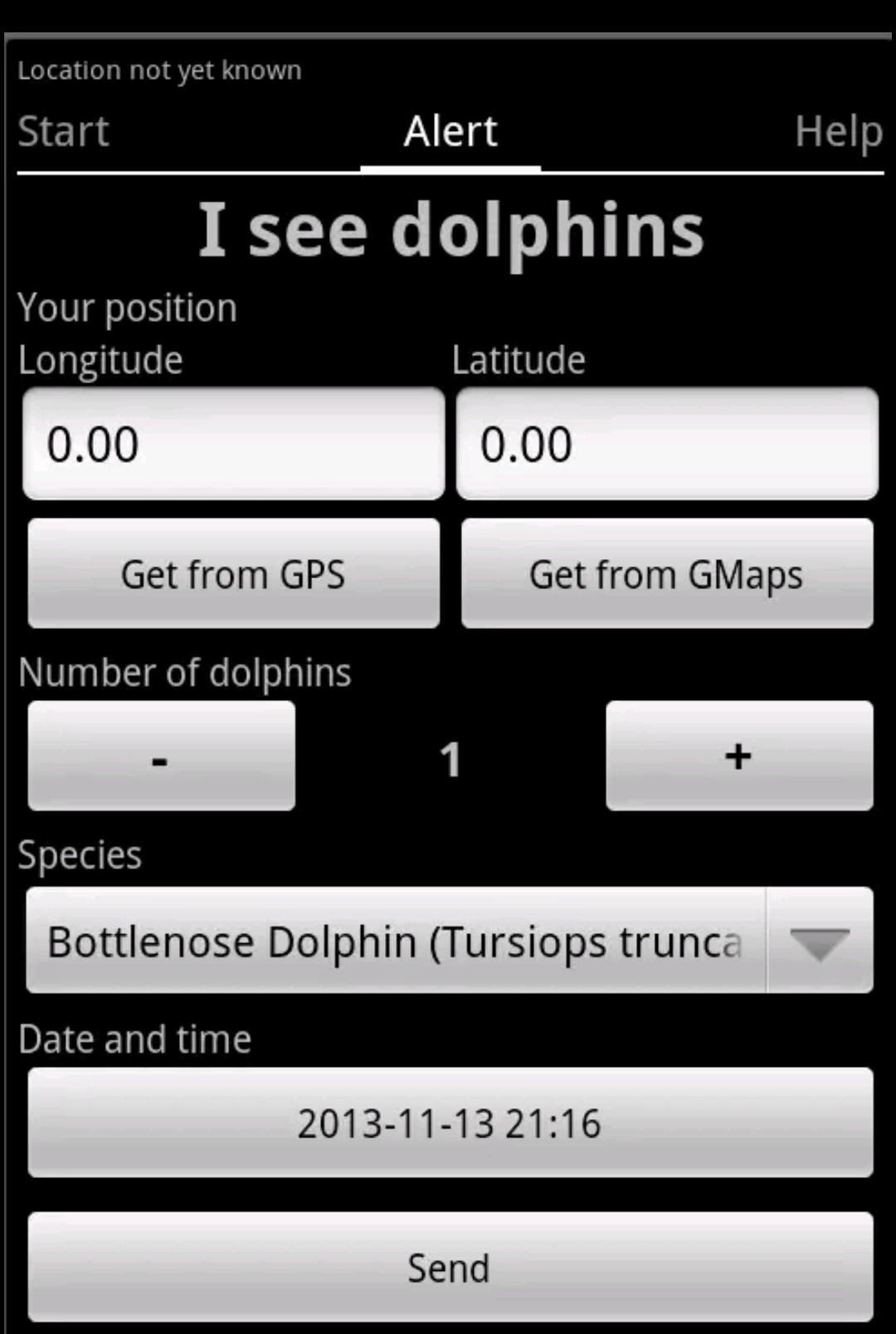
CroDolphin little app screenshot
Every sighting report triggers a text message that is sent from the app to the expert team tracking the marine mammal population. The data is also automatically stored in the database that’s open to the public, but for the sake of animal safety, any sightings reported in the last 12 hours aren’t shown on the map.
The app is available for iOS and Android, and requires internet connection for map usage.
All marine mammal species inhabiting the Adriatic, including bottlenose dolphins, are considered endangered and have been protected under Croatian law since the 1990s. It’s forbidden to kill the animals, harass them in any way, or destroy their habitat.
If you spot a dolphin on the Croatian coast, we encourage you to report the sighting, but above all remember to observe and appreciate these wonderful animals from a distance to help keep them safe. Here’s our short guide on how to behave when you see a dolphin, and what to do in case you come across a stranded or injured animal.
Venomous Devil's Firefish Photographed for First Time Close to Komiza
August the 15th, 2021 - Swimmers close to Komiza should keep their eyes peeled when enjoying the beautiful Croatian Adriatic after the potentially dangerous Devil's Firefish or Lionfish (Pterois miles) was filmed swimming in that area for the very first time.
As Morski writes, a few articles have already been written about the appearance of new, venomous and potentially highly dangerous fish in the Croatian Adriatic. The Devil's Firefish (Pterois miles) has been seen several times in the waters of neighbouring Italy, and experts rightly expected that this species would spread very quickly to the Eastern, Croatian part of the Adriatic. Now it has become official, because the dangerous fish was filmed for the first time swimming near the Komiza seabed by an underwater photographer and diver, Damir Zurub.
''Today I had a close encounter with the invasive Devil's Firefish (Pterois miles) for the first time, but not somewhere where it's common to come across it. To be more precise, I took several photos of this fish in the Adriatic while diving with DC Manta near Cape Stupiste, near the coast of Komiza on the island of Vis - these are the first shots and probably the first recorded encounter with this invasive fish species in the Adriatic sea,'' announced Damir Zurub, confirming that the fish was filmed at a depth of just fifteen metres, where he also recorded an incredibly high sea temperature of 24 °C.
The editor of the Podvodni.hr (Underwater.hr) portal, marine life expert Pero Ugarkovic, also commented on the finding:
''Three months ago, I learned that an individual from Italy was preparing to publish a paper declaring this fish a resident of the Adriatic. These were several finds near Otranto. I published this on the portal and announced that we might expect to see this fish in Croatian waters this year. Today, that happened, the first official find was discovered and photographed by Damir on Vis.
The fish is Pterois miles, people sometimes call it the Lionfish or the Devil's Firefish. It will be constantly mentioned in the media because it is an invasive species that also has a poisonous sting, it will be said that it is a pest and that it is dangerous. There will probably be more and more of them, we'll see them in the underwater picture galleries. Everyone will know about them, even those who have never even seen the Adriatic. Once the population is established as in Greece, catching them will be celebrated and encouraged, some modest means will be invested in its suppression. They will be sold at the fish markets, and chefs will come up with recipes.
But in the end, we will have to accept this fish as a common occurrence here, as everything changes. For centuries, we've been trying to intensively and indiscriminately catch everything from the sea, fill it up, build it up and pollute it. Each new generation remembers a different, more primordial Adriatic of their youth that will never return. For some future generation, the Devil's Firefish may even become a symbol of Dalmatia,'' concluded Ugarkovic when discussing the presence of this fish near Komiza.
For more, follow our lifestyle section.
Stay Safe on Your Holiday: Croatian Wildlife and Marine Animals to Avoid
Aug 01, 2021 - Do not risk ruining your perfect holiday and learn about the potentially dangerous Croatian wildlife and marine animals you may encounter, albeit a small chance, during your trip to Croatia. Always remember: if it’s predictable, it’s preventable! Here’s a guide to potentially dangerous animals in Croatia, where they can be found, what to look out for, and what to do if you get attacked or bitten.
Snakes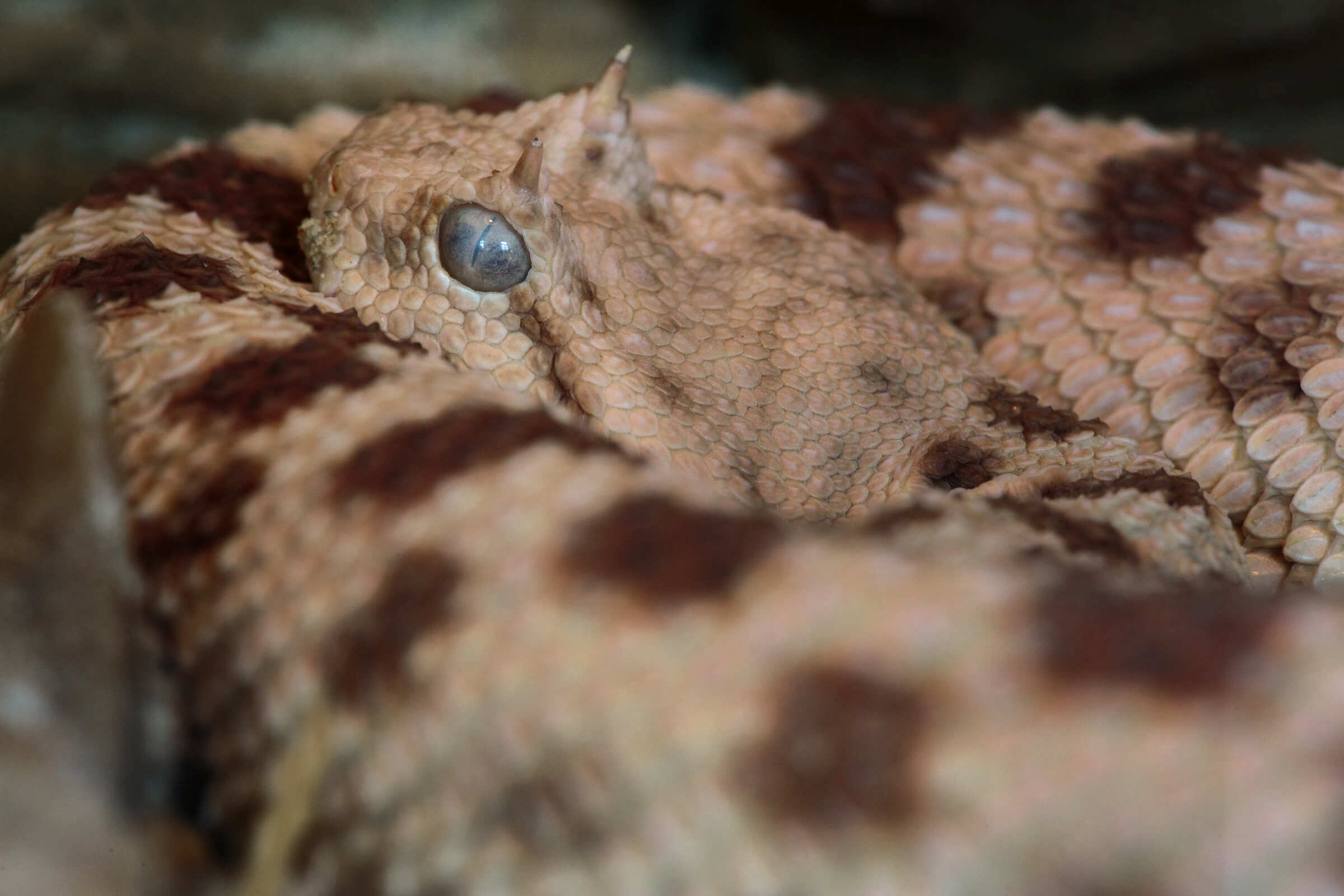
Photo credit: Mario Romulić
There are currently 15 snake species that are known to inhabit Croatia, and only 3 of them are venomous. Two of these venomous snakes - karst meadow viper and common European adder - are generally considered harmless since their venom have low potency and do not pose a serious threat to normal and healthy humans. However, the horned viper has been linked to 4 fatal deaths in Croatia. Although these vipers exist throughout the country, they are mostly found in the coastal cities and stony mountains of Dalmatia. They can be identified by the distinctive zigzag pattern on their backs. The horned viper, locally known as poskok, has a horn on its snout where its name was derived from. Its body is usually gray, sometimes pinkish-grey, with a dark grey/black zigzag pattern from head to tail. Horned vipers are usually quiet but will attack when provoked. These snakes have also been reported to have the ability to jump at a distance of 5 feet and as high as 3 feet. On the other hand, the common European adders are mostly found on meadows and freshwater and river lowlands of the Sava, Drava, Mura and Danube. They are also found in mountainous areas such as Gorski Kotor. Meanwhile, the karst meadow vipers prefer higher altitudes so they are mostly found in the mountains of Dinara and Velebit.
What to do when you encounter a snake? Slowly back away from the creature - do not attempt to catch the snake or chase it away. It is also best to avoid tall grassy areas and if passing through one is unavoidable, wear sensible and protective footgear. Never stick your arms or legs into unknown, dark and hollow spaces or any rock, leaf and wood piles - these are snake's favourite hiding places! Lastly, always pay attention to your surroundings when climbing and hiking. For suspected snake bites, try to keep as still and calm as possible - a higher heart rate could cause the venom to spread faster. Tie a tourniquet from the bite towards the heart to delay the circulation of venom and seek medical assistance immediately!
Bears Photo credit: By Marshmallow - https://www.flickr.com/photos/tmarschner/2728816091/, CC BY 2.0, https://commons.wikimedia.org/w/index.php?curid=7080486
Photo credit: By Marshmallow - https://www.flickr.com/photos/tmarschner/2728816091/, CC BY 2.0, https://commons.wikimedia.org/w/index.php?curid=7080486
Croatia is full of forests and mountains, therefore, it makes an ideal home for the Croatian brown bear. It is highly unlikely to encounter them in established tourist attractions in Croatia but the risk goes higher around the mountainous regions of Gorski Kotar, Velebit, Lika, and even in the Biokovo and Mosor mountains of Dalmatia. Bears usually mind their own business and avoid humans, however, a mother bear with her cubs tends to attack any potential threats, even unprovoked. Nevertheless, only 3 bear attacks on humans in Croatia have been reported and all of them were non-fatal.
To avoid accidentally encountering a bear, Ivor Kocelj, an official tour guide in Croatia suggests that during a hike, talking, listening to music, or even clapping allow bears to notice the human presence and flee in advance. If a bear is spotted from a distance and looked unprovoked, you may continue to observe it, in silence. If the bear is within close proximity, try to calm down, retreat in silence, avoid eye contact and wait for the bear to leave. Bears are attracted to food so minimize bringing food with a strong odour and store them properly. Also, never come close to a bear cub because mother bears are extremely protective. Lastly, ALWAYS follow the marked hiking trails - let the wild animals live undisturbed in their habitat!
Black Widow Spider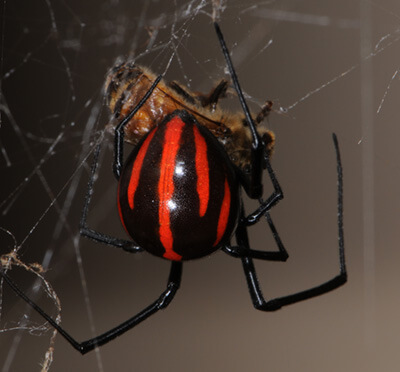 Photo credit: By Camazine - Own work, CC BY 3.0, https://commons.wikimedia.org/w/index.php?curid=4809805
Photo credit: By Camazine - Own work, CC BY 3.0, https://commons.wikimedia.org/w/index.php?curid=4809805
It is the most poisonous spider in Europe and is characterized by the distinctive red spots against its black back. In Croatia, they are found in the coastal areas of Istria, Dalmatia and Primorje. The spider's bite is reportedly almost painless with symptoms appearing a few hours later which can include spasms, immense pain and sometimes, paralysis. Even though the venom is poisonous, most healthy adults would not suffer any fatal effects but the children, the elderly and people with weakened immune systems are highly susceptible. Black widow spiders often live in bushes, under rocks and grassy areas so the reported cases of spider bites are usually from people who accidentally stepped on them while walking barefoot. Hence, it is always advisable to wear proper footwear when outdoors. For any suspected black widow spider bites, seek prompt medical assistance.
Scorpions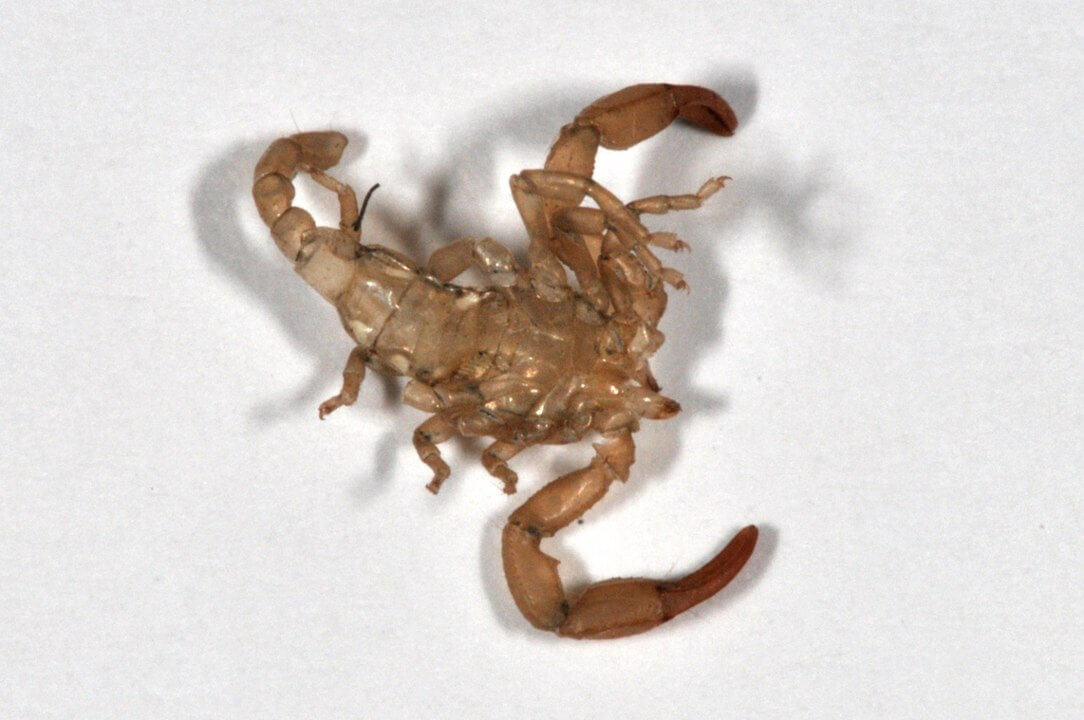 Photo credit: By Fritz Geller-Grimm - Vlastito djelo, CC BY-SA 3.0, https://commons.wikimedia.org/w/index.php?curid=9854317
Photo credit: By Fritz Geller-Grimm - Vlastito djelo, CC BY-SA 3.0, https://commons.wikimedia.org/w/index.php?curid=9854317
Few scorpion species are found in Croatia but the two most common species are the Euroscorpius Italicus and E. Germanus both of which are relatively harmless. Scorpions do not pose a serious threat to humans, however, a scorpion's venom may cause swelling, redness and itching around the area. The person may also experience severe pain, allergic reactions, tingling and numbness. These arachnids are mostly found in coastal, rather than continental, regions of Croatia. If stung by a scorpion, it is best to apply a cool compress on the affected area and a pain relief medication if needed. To be safe, have the bite checked by a medical professional, especially if it is on a child. Take note: scorpions are protected species in Croatia so do not kill them if you spot one!
Ticks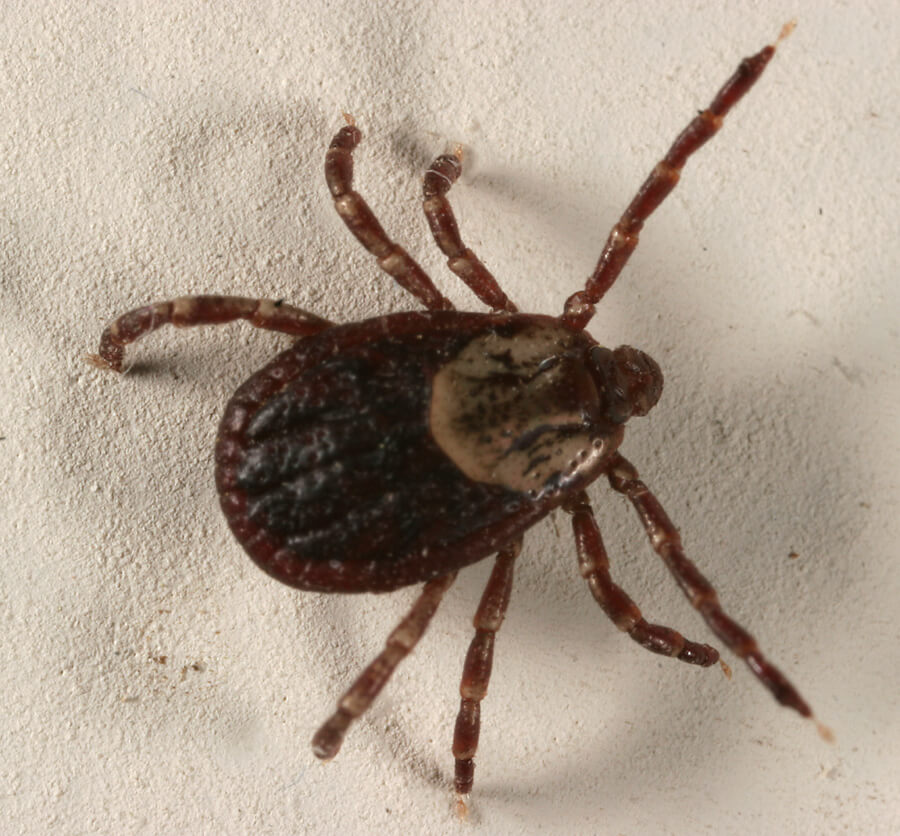 Photo credit: By André Karwath aka Aka - Own work, CC BY-SA 2.5, https://commons.wikimedia.org/w/index.php?curid=131004
Photo credit: By André Karwath aka Aka - Own work, CC BY-SA 2.5, https://commons.wikimedia.org/w/index.php?curid=131004
Ticks love wooded and grassy areas, as well as humid and warm environment - therefore, ticks can be found almost anywhere during spring and summer in Croatia. Most ticks in southern region of Croatia do not carry tick-borne illnesses. The ones who may transmit or cause infections such as Lyme disease, encephalitis and tick paralysis are active in May and June and are mostly found in forested regions of continental Croatia. To avoid getting bitten by these blood-sucking insects, it is best to wear full-length clothing and insect repellent especially during outdoor trips. If bitten and a tick is attached to your skin, grasp the tick as close to the skin's surface as possible and pull it upward steadily using fine-tipped tweezers to safely remove the tick. Make sure not to leave any parts of the tick in your skin and clean the bite area, as well as your hands, with soap and water and rubbing alcohol. Remember to never crush a tick with your bare hands as it may transmit diseases. It is best to dispose a live tick in alcohol solution, place it in sealed container or flushing it down the toilet.
Sharks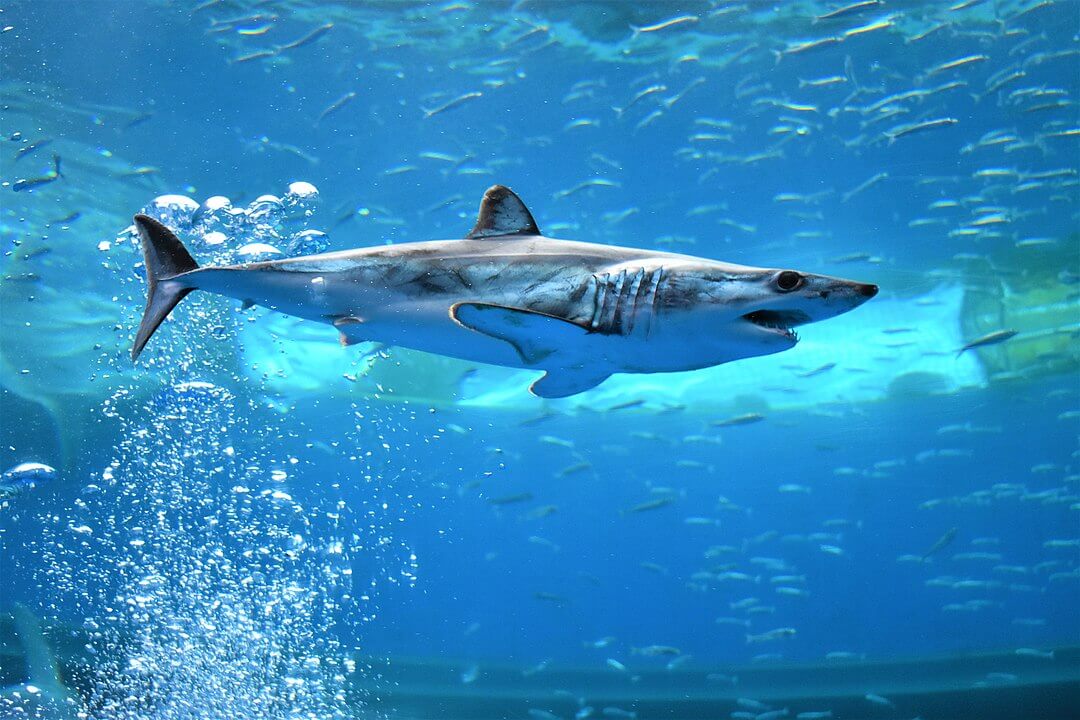 Photo credit: By 出羽雀台 - Own work, CC BY-SA 4.0, https://commons.wikimedia.org/w/index.php?curid=107209573
Photo credit: By 出羽雀台 - Own work, CC BY-SA 4.0, https://commons.wikimedia.org/w/index.php?curid=107209573
With rich marine biodiversity, numerous species of sharks are found in the Adriatic waters with only two species - Mako and Great White sharks - are deemed dangerous to humans. According to Shark Attack Data, since the 1900s, there have been 11 reported fatal shark attacks in Croatia - the latest of which took place in 1974 in Omiš. The last recorded non-fatal shark attack was in 2008 near Vis Island. Nonetheless, the attacks in the Adriatic sea are extremely rare so it is still very safe for swimmers, surfers and divers.
The best way to avoid a shark attack is to take extra precautions when going to the sea. For starters, avoid swimming too far away from the coastline and do not wear bright jewellery because sharks might confuse it for a glistening fish, a.k.a, shark food. If a shark happens to be nearby, try not to panic and swim away vertically without making too much movements and noise. If a shark ends up attacking you and you are not alone, it is best to stay in a defensive position (back-to-back) to avoid surprise lunges from sharks. It is impossible to outswim a shark so your best bet is to make the shark see you as a strong and credible threat by throwing a jab at the shark's most vulnerable areas - gills, eyes and snout. Targeting these areas can cause the shark to retreat. Sharks rarely attack but when they do, it can be severely dangerous, even fatal; so the surest way to prevent shark-related incidence is to steer clear from shark-infested areas.
Sea Urchins Photo credit: By Lacen - Croatia, Public Domain, https://commons.wikimedia.org/w/index.php?curid=248760
Photo credit: By Lacen - Croatia, Public Domain, https://commons.wikimedia.org/w/index.php?curid=248760
The presence of sea urchins is a sign of clean and unpolluted water, hence, it's no wonder that these spiky creatures are ubiquitous on the Adriatic Coast. Every tourist season, the public beaches in Croatia are often cleaned of sea urchins so most of them are found in secluded and natural beaches near the shores and around the rocks. Sea urchins are not poisonous but stepping on their spikes cause painful foot injury which can make the rest of your trip irritating and uncomfortable. Their spikes break easily and worse, they get stuck under the skin. The best way to prevent a sea urchin injury is to wear a pair of protective water shoes (warning: may trigger strong disapproval look from locals). If you accidentally stepped on a sea urchin, use tweezers to remove any spikes, although some will be too deep to be taken out. Afterwards, clean the affected area with soap and water but remember to leave it open and unbandaged. Use pain relievers if needed.
Jellyfish & Sea Anemone Photo credit: By Mark Ahsmann - Own work, CC BY-SA 3.0, https://commons.wikimedia.org/w/index.php?curid=30241025
Photo credit: By Mark Ahsmann - Own work, CC BY-SA 3.0, https://commons.wikimedia.org/w/index.php?curid=30241025
Jellyfish are gelatinous sea creatures mostly made up of water, thus, they do not have good movement control. These creatures mostly float and are carried by sea currents so their presence is detected from time to time in the Adriatic sea. Unfortunately, when jellyfish end up in Adriatic coast, they come in huge numbers so jellyfish related injuries go up as well. However, most of the stinging incidents occur when a human accidentally brushes across a jellyfish while swimming. The jellyfish that are found in the Adriatic sea come from cnidarian family of which contain a number of species that are poisonous. The long tentacles of jellyfish are able to pierce through human tissue where their poison is transferred. Sea anemones are also found in the Adriatic shores, especially, the cylinder anemone. This type of anemone is often found in shallow waters and unlike jellyfish, sea anemones are sedentary and are attached to seabeds and rocks where humans can easily step on them.
A jellyfish and anemone sting may cause searing pain or severe burning sensation in the affected area and redness and rashes may also appear. Sometimes, the area swells and gets blistered, too. Some people have been reported to develop severe symptoms including eczema, violent itching, and darkened skin pigmentation. In very rare cases, jellyfish venom can lead to anaphylactic shock causing serious health risks. Depending on the severity of the situation, the first aid for a jellyfish sting is to wash it with salt water (freshwater can intensify the pain), and wash the injured area with vinegar or alcohol because these can block the poison from releasing further. There are also medications that reduce swelling and itching but the best treatment option is to get the injured area checked by a medical professional.
Important note: Dead jellyfish can still sting so never touch one with bare hands!
Weever Fish 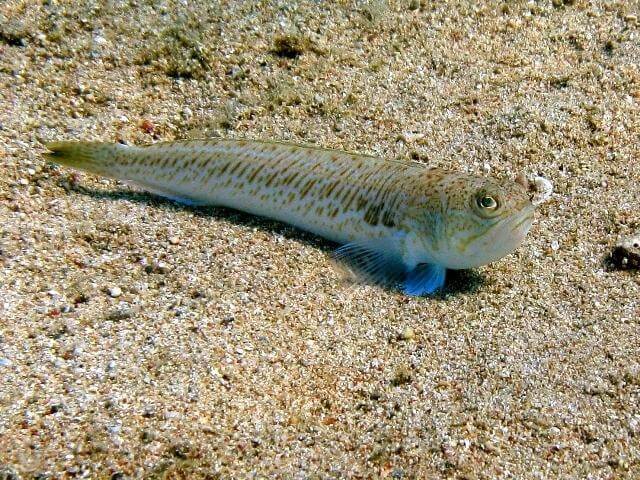 Photo credit: By Roberto Pillon - http://www.fishbase.de/photos/thumbnailssummary.php?ID=1363#, CC BY 3.0, https://commons.wikimedia.org/w/index.php?curid=25931842
Photo credit: By Roberto Pillon - http://www.fishbase.de/photos/thumbnailssummary.php?ID=1363#, CC BY 3.0, https://commons.wikimedia.org/w/index.php?curid=25931842
The greater weever, locally known as pauk, is the most commonly found weever fish in the Adriatic sea. Other species from this family include starry weever, lesser weever and spotted weever, all of which are very rarely found since they prefer deeper areas and only approach the shores during mating season in winter. The greater weever poses the biggest hazard to humans because they often swim in shallow waters. The weevers have spikes on their gills and dorsal fins where their poison is located. Most incidents including greater weevers happen due to fishermen's carelessness and lack of knowledge or when a swimmer steps on the fish accidentally in the shallow waters. The venom of weever fish brings unbearable pain within 15 to 30 minutes of contact and swelling. The most common reactions to weever venom include loss of consciousness, nausea, loss of sensation in the affected area, elevated heart rate and breathing difficulties. The first aid for weever fish poisoning starts with removing the remaining spikes and disinfecting the area with clean water and soap. Afterwards, soak the area at the highest temperature one can endure for at least half an hour while being careful not to cause burns on the skin. Poison from weever fish is believed to be volatile in heat so this step is highly advisable to delay the spread of the poison until medical help arrives.
In general, the diverse and beautiful Croatian wildlife is very safe as long as you keep proper distance and safety measures from the wild animals. It is highly unlikely for you to come across these wildlife dangers, except maybe for sea urchins, but it is always best to stay alert and observe necessary precautions when travelling in unfamiliar places. Get acquainted with the list of numbers and responders in Croatia you may need to contact in case of emergency. Have a safe travel and remember, watch where you step!
For more on travel, follow TCN's dedicated page.
For Croatia's best travel destinations and trips, follow Total Croatia.
CLICK HERE for more about Croatia.
Croatian Divers Discover Dangerous Jellyfish in Istrian Waters
June the 14th, 2021 - A warning has been issued to swimmers in the southern Istrian part of the Adriatic after Croatian divers stumbled upon a dangerous type of jellyfish.
When swimming in the calm and peaceful Croatian Adriatic, it's difficult to imagine that anything could be lurking down in the depths where you can't see. The crystal clear waters allow for a view of all of the fish and other marine creatures living down below, but rarely do we imagine coming to some harm.
Although sharks do live in the Croatian Adriatic, they pose little to no threat and much prefer to avoid any contant with humans, making being able to see and film them a delight rather than the cause of a panic attack. The most common injury caused by a resident of the Adriatic is one by a sea urchin, who can pack a punch with its spikes when accidentally stepped on.
Jellyfish, however, are quite another story indeed, and a recent discovery is of a type which does more than deliver an uncomfortable but generally harmless sting.
As Poslovni Dnevnik writes, Croatian divers spotted the dangerous jellyfish (Pelagia noctiluca) on Sunday in the south of Istria. Being stung by this jellyfish causes severe pain, and upon contact with human skin, the creature causes agonising injuries similar to burns that are then very difficult to heal.
This jellyfish, which has numerous names - the mauve stinger, the purple-striped jelly, the purple stinger, the purple people eater, the purple jellyfish, the luminous jellyfish and the night-light jellyfish, is a relatively small creature with a semicircular head and pink tentacles, sprinkled with tiny purple dots.
As stated, upon contact with human skin, severe pain occurs and injuries similar to burns appear, which are difficult to heal, followed by depigmentation of the skin and even deep scarring, local portal Glas Istre writes.
This jellyfish was spotted by the Croatian divers on Sunday in the bay of Velika Kolumbarica near the Kamenjak peninsula. Sea currents and waves sometimes carry these jellyfish to the shore, where they'd prefer not to be, and where they become a threat to swimmers.
For more, follow our lifestyle section.
CASCADE Project: Italy and Croatia Collaborating on Ecosystems Monitoring
June 4, 2021 - With the scientific community in Croatia busy and involved in international projects, meet the CASCADE Project. Learn how Italian and Croatian scientists are working together in monitoring ecosystems.
Croatian scientists in Croatia are running various projects which either don't get reported on by journalists, or if they are reported on, they sadly don't get too much attention from the public.
One such project is the Projekt CASCADE which started back on January first, 2020, and will continue until the very end of 2022.
As reported on the website of The Institute of Oceanography and Fisheries (IOR), the 5,817,547 euros, 85 % of that capital (4,944,914.95 euros) is secured by The European Regional Development Fund (ERFD).
CASCADE is short for „CoaStal and marine waters integrated monitoring systems for ecosystems protection and management“, and is part of the Interreg Italy-Croatia 2014-2020 strategic program. Assess the quality of coastal marine ecosystems in order to restore the habitats of endangered species and provide support for integrated management is the main goal set by 2022.
For the next three years, the project team from the Laboratory for Plankton and Shell Toxicity and the Laboratory for Chemical Oceanography and Sedimentology will work on monitoring, gathering knowledge about habitat and ecosystem biodiversity in the field of project cooperation (Adriatic Sea). It will participate in the establishment of new, as well as the improvement, of existing coastal systems for monitoring and management of coastal and open water ecosystems. Joint actions will assess and protect coastal and marine biodiversity and establish restoration actions. The pilot area of the Institute of Oceanography and Fisheries (IOR) within the EU CASCADE project is the mouth of the Neretva River“, explains the IOR website.
There are eleven pilot areas in Croatia and Italy where the researches will be conducted: lagoon Grado and Marano and Gulf of Trieste, coastal belt of the Italian region Emilia-Romagna, marine protected area Torre Guaceto (natural reef), Punta Della Contessa, Melendugno in the Italian region of Puglia, the mouth of the Neretva river, the coastal zone of the Italian region of Veneto, mouth of the river Miljašić Jaruga, coastal belt of the Italian region of Molise, the northeastern part of the Adriatic Sea in Croatia, mouth of the river Cetina, Torre del Cerrano and Pineto Marine Park on the Abruzzo coast, and finally, the coastal zone of the Italian Marche region.
„At the mouth of the Neretva River (P4 pilot area), the IOR team members will sample sediment, shells, and seawater, depending on the type of matrix, they will analyze various parameters such as salinity, oxygen concentrations, heavy metals, and nutrients, with the aim of establishing an optimal system of observation of coastal and open waters“, added IOR.
The head of the projects within the IOR side is Dr. Sc. Ivana Ujević and various Italian and Croatian regions/counties, regional development agencies, scientific institutes, and two ministries from Italy and Croatia are included as associated partners.
Learn more about Croatian inventions & discoveries: from Tesla to Rimac on our TC page.
For more about science in Croatia, follow TCN's dedicated page.
Journalist Clickbait Victim: The Curious Case of Mystery Fish on Korčula
June 2, 2021 - When TC editor Iva Tatić caught the fish nobody could identify, TCN reporter Ivor Kruljac jumped to action in the hope he will find a marine life scoop. But after the dramatic realization that Atlantic lizardfish is nothing spectacular, he became a journalist clickbait victim. Meet the mystery fish on Korčula.
It was early evening between 7 pm-8 pm on the eastern Korčula coastline on May 28. After a long week of handling the Total Croatia site, TC editor Iva Tatić decided to chill and went fishing. Instead of managing the multilingual site that brings you the best tips on how to travel and enjoy Croatia, she must've been happy with the idea she can enjoy in Croatia herself, as she was preparing two hooks – one with a squid and the other with the piece of bread. Marine life must be very humble cause instead of a squid (absolutely delicious, either fried or grilled and stuffed with swiss chard), the bread was the taken bait for the careless fish soul underneath the Adriatic surface.
Iva took the opportunity and caught its prey, but pretty soon, happiness for the catch was additionally spiced with curiosity.

the source of curiosity and happiness © Iva Tatić
„What the hell is this?“ Iva asked the local Korčula fishermen showing them her catch.
And „no idea“ was the consensus by other marine life hunters.
„Locals call it the spider“, said a local fisherman known as Pero to Iva. „It looks like Spiderman“.
Iva didn't feel that Spiderman is an accurate comparison, and as no one really knew the answer, the whole thing went online.
After Iva shared the photos of its catch on Facebook, the online jury narrowed the mystery to two possible suspects: Saurida and Atlantic lizardfish.
Still being new and wanting to gain recognition in the newsroom, I took on myself to investigate what exactly is this Aquaman-Spiderman-love-child. Perhaps it's something invasive, a threat to the lovely Adriatic, and a fantastic journalist story.
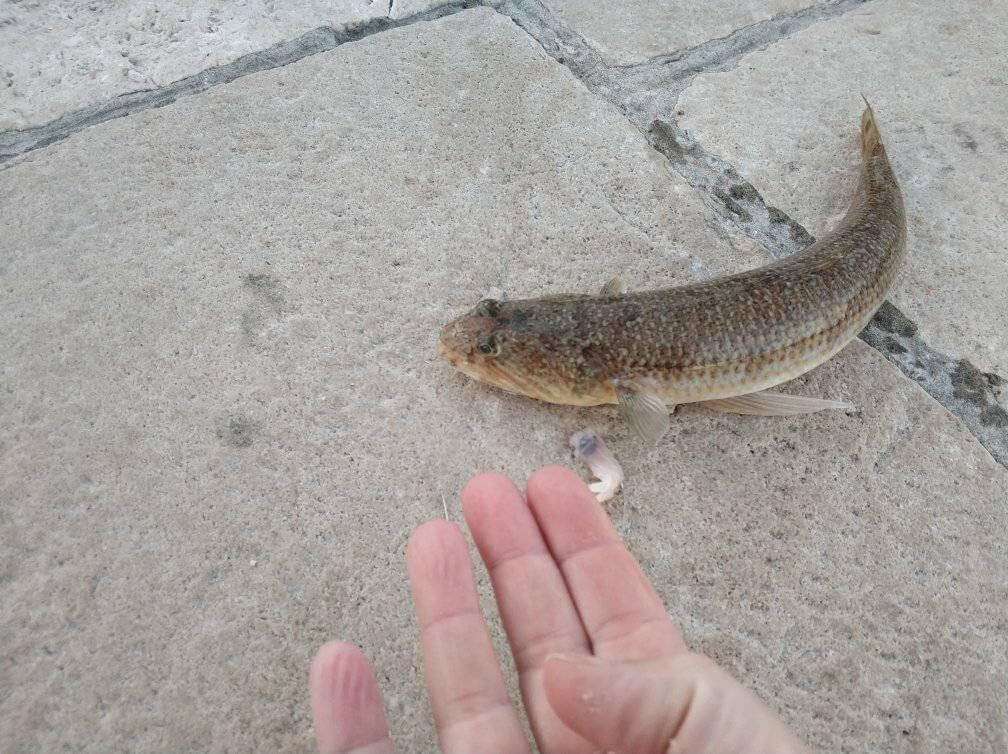
The case, the challenge, the scoop © Iva Tatić
Word on the expert street
A little bit of browsing through the pages of Rovinj Sea Research Centre (CIM), and a few calls, led me to the CIM Senior scientific associate, dr. Andrej Jaklin.
„It looks like Atlantic lizardfish, I saw that fish in person on Pelješac 15 years ago“, said Dr. Jaklin on the phone while looking at the images of the catch I sent him.
Jaklin's memory also seems fit with Pelješac being close to Korčula Island. Still, he said he can't really tell me too much about the fish and recommended it to me to contact dr. Marcelo Kovačić from the Natural History Museum Rijeka. However, dr. Kovačić, a curator for vertebrates, was on vacation, so the call was picked up by Milvana Arko-Pijevac, curator for marine invertebrates.
„I think this could be an Atlantic lizardfish, the head looks like it should, but I'm specialized for invertebrates, mollusks and shellfish“, said Silvana Arko-Pijevac.
So until that point, two experts for marine bio life are certain this is an Atlantic lizardfish (Synodus saurus). Fish, from Atlantic, I thought. Are we talking about an invasive species that manage to come to the northern dead-end of the Mediterranean all the way from the Atlantic? If so, is it hazardous to the domestic sea life of the Adriatic?
Despite recognizing the fish, neither Jaklin nor Arko-Pijevac couldn't say more details, but it's worth noting that the scientific community can once again serve as a role model to everyone who thinks they are experts on everything (both in Croatia but a trend we see spawn worldwide). Instead, my interlocutors accepted and pointed out the limits of their knowledge and suggested me someone who knows more.
Clickbait: It's not just for journalists anymore!
It took me a while to reach Dr. Jakov Dulčić from the Laboratory of Ichthyology and Coastal Fishery at the Institute of Oceanography and Fisheries in Split. First, he was not in the office, and later, he was at a meeting. But, with Arko-Pijevac's claim that Dulčić is the best ichthyologist in all of Croatia, it was worth the wait.
Finally, my mobile phone impulses from Zagreb caught dr. Dulčić in Split, and I excitedly asked him for help. To identify and say a bit more about the mysterious fish fishermen in Korčula failed to recognize, but is suspected to be the Atlantic lizardfish.
„I have to see the photos to say for certain“, said Dulčić.
„I already sent them to your e-mail before this call. Can you please refresh your E-mail?“, I asked with hearable excitement in my voice and suspense in my gut.
The suspense only grew as Dulčić was opening the e-mail.
„Found it!“, he said and I almost screamed out of excitement,
„Yes, indeed, that is the Atlantic lizardfish“, confirmed Dulčić with a relaxed voice while I was ready to ask tons of questions about this weird and possibly invasive species.
„But that is neither exciting nor anything special to catch in the Adriatic“, continued Dulčić with the same chilled tone.
I listened to that sentence with a blank expression fortunately, nobody has seen it except the walls in my apartment.
„You might think it's unusual in Croatian waters because of its name, but it's the normal fish that lives in Adriatic“, added Dulčić.
I couldn't help but think what a sour poetic justice. Being a journalist, a member of the profession in which some of my colleagues try to catch views by clickbait, to be hooked (pun intended) on a clickbait in scientific terminology.
„They can be found across the Adriatic sea, everywhere in Croatia. Their population used to be smaller in the previous years, but it recently got larger. It seems they have certain cycles, but it's nothing spectacular“, he concluded.
„But how come none of the fishermen recognized it?“, I asked puzzled.
„Interestingly enough, it is often caught, but it can rarely be seen on the fish market, and that's a place thanks to which you can usually recognize fish“, explained Dulčić.
However, informing and educating fishers and the general public about marine life in the Adriatic is something dr Dulčić and the Oceanographic Institute are very dedicated to.
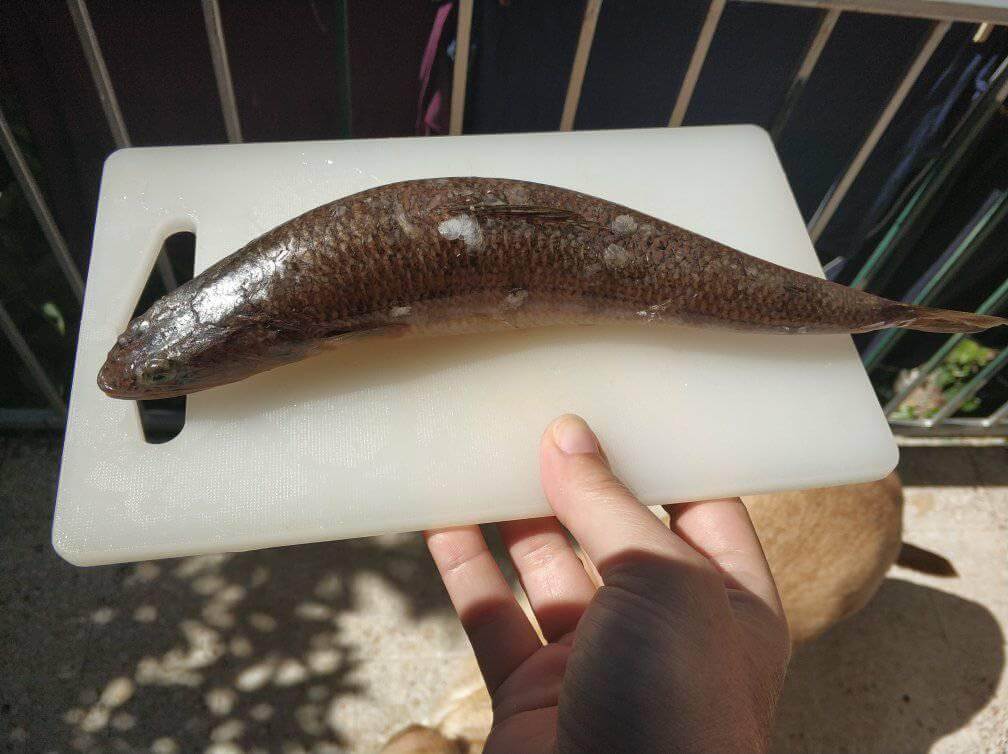
Presenting you the Atlantic lizardfish © Iva Tatić
This is evident by the LEKFishResCRO project.
„This project will address the need to improve knowledge on the trends in Adriatic fisheries with novel methods as well as to acknowledge recent changes in fish biodiversity in a complex Adriatic ecosystem. The central objective of the project will be to evaluate the potential use of the LEK in developing the knowledge base for fisheries management and conservation. The strategy employed for this evaluation will be a two-way discussion between fisherman and other stakeholders from one side and fisheries biologists from another side around the subject of what sorts of indicators of ecosystem health would make sense in light of both the LEK of the fishers and the research-based knowledge (RBK) of the fisheries biologists“, says LEKFishResCRO website, and with loads of materials, you can check yourself.
„We collaborate well with fishermen, we work on their education, and with their tips and images they sent from the field we quickly gather research data“, explained Dulčić.
The invasive species are legitimately a threat to Adriatic, and it comes from the Red Sea through Eastern Mediterranean, but these examples are excellent topics for some other articles.
In the meantime, the mystery fish is identified as a mainstream species in the Adriatic. Somewhat newsworthy (maybe?), but this time my ship returned without a scoop from the stormy cruise in the sea of information.
I sent a message to Iva explaining what she caught (which she already found out on her own, she is a good journalist after all), and I only confirmed that she can unfreeze it and eat it safely. Additionally, I found this recipe at least.
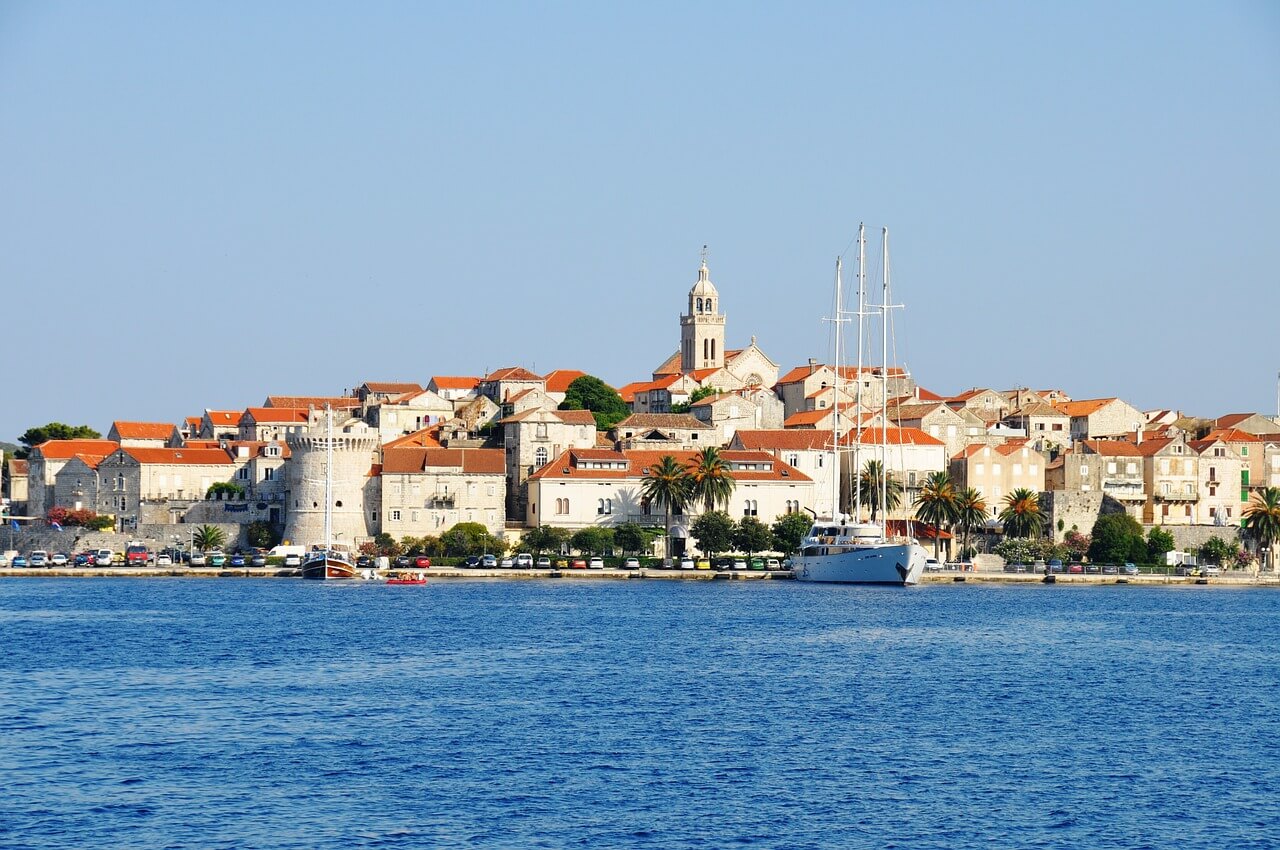
Korčula and Adriatic Sea, Pixabay
Enjoy the Adriatic, but respect marine life
In an attempt to conclude this investigative piece (let's pretend it is one, please) on a socially responsible and eco-friendly note, I asked dr Dulčić if there are any type of fish tourists and locals shouldn't fish because it's on the verge of extinction and if caught it should be returned to the sea immediately. „Such fish is living in areas and conditions where you can't catch it with hooks or nets. But Do not dive out noble pen shells (Pinna nobilis), or disturb mammals such as dolphins. And be careful around sharks and jellyfish“, concluded dr. Dulčić.
Learn more about Korčula on our TC page.
For more about science in Croatia, follow TCN's dedicated page.
Beautiful Sea Angels Discovered Living in Croatian Adriatic
The Croatian Adriatic is one of the main draws for tourists, especially those coming from the rest of Europe, to the Croatian coast. While history, culture and gastronomy are of course all high on the list, as is the interior and continental part of the country in more recent times, the sparkling Adriatic is usually what seals the deal for the majority of visitors. But just how much do we really know about its inhabitants?
Over the summer, we've had various stories and some incredible footage of dolphins, sharks, a variety of sea snakes, jellyfish and slugs - all of which attracted a decent amount of attention, especially ''Moky'', the Mako shark that kept appearing along the Dalmatian coast, from Korcula to Makarska, posing for the cameras as he went.
It seems another creature that we previously didn't know lived in the Croatian Adriatic has now appeared, and it looks like something straight out of a fairy tale - the beautiful and tiny sea angel.
As Morski writes on the 18th of October, 2019, the miraculous little sea angel (Pneumodermopsis cfr. Paucidens) is a very small swimming snail that we did not know lives in the Croatian Adriatic until this very month, according to a report from Podvodni.hr.
The first sea angel was discovered, followed by entire schools of them, all close to Čiovo. Not much is known about this gorgeous-looking species at all other than the fact that many types of sea angel feed almost exclusively on what are known as ''sea butterflies'' and as previously stated, nobody realised that they lived in Croatian waters. Although we have not found them in the Adriatic so far, it doesn't necessarily mean that they were not there before, noted Podvodni.hr.
Otherwise, sea angels are hermaphrodites can grow up to five centimetres in length.
Watch a video of these fascinating creatures here:
Make sure to follow our dedicated lifestyle page for much more.
VIDEO: Split Woman Films Unusual Sea Creature in Shallows of Kaštilac Beach
An unusual sight was encountered by a Split woman Friday morning when walking along the shoreline of Kaštilac beach.
''A sea creature I've never seen before was swimming in immediate vicinity of the shoreline, and then stayed for a while along the coastal rocks. I've never seen anything like it,'' the Split woman stated when describing her "close encounter" with a strange sea creature.
As Morski writes on the 27th of September, 2019, experts from Dalmacija Danas have since pointed out that what she saw was a species of ''mottled sea hare'' (Aplysia fasciata), which can be observed relatively frequently throughout the Adriatic.
Aplysia fasciata is a hermaphrodite, which means that it has both male and female sexual organs, and interestingly, it has the ability to change its gender whenever it desires. This means that these organisms can be both male and female, during mating, only one takes on the role of the male and donates their sperm. Pero Ugarković, editor of Podvodni.hr website and associate of the Institute of Oceanography and Fisheries in Split, explained more about these interesting creatures.
''They are double-sexed, possessing both male and female reproductive organs. Larger specimens have a better role as females because they can produce more eggs. The smaller ones are better as the males.
But, there are rules, sea hares can decide whether to be a male, female or both, if they want. It grows to 40 cm in length and can weigh 1.5 kg. They can also often be seen swimming across the sea's surface, using parapods for swimming. They're more active at night. Although they're very common in the Adriatic, especially along the coasts of where we live where there are many algae for them to feed on, for some reason, many people don't recognise them, so I often get asked questions and asked figure out what kind of animal it is.
It's also called the sea cow in some areas because it grazes on grass. In fact, this is a group name for all very similar species from the family Aplysiidae, of which there are eight present here in the Adriatic, of which two are newly arrived ocean species,'' explains Ugarković.
Despite the fact that it adorns our underwater world, it is not eaten, so perhaps that's why so few people know about it. Like most mollusks, it releases secretions for defense purposes, that is, it releases two secretions that it produces from two different glands, white and purple. The purple fluid has antiviral properties, and it's interesting to note that the secretions of the new Adriatic species (Bursatella leachii) has proteins which attack the HIV virus.
The food they eat is full of the harmful ingredients that these snails accumulate, mostly in their skin, and it serves them as a good defense against invaders. Therefore, sea hares could also be used to measure the level of marine pollution,'' explained Ugarković.
In any case, what the woman from Split saw is a species that causes astonishment to most people, but it is completely harmless.
Watch the video of the sea hare filmed near Split here:
Make sure to follow our dedicated lifestyle page for much more.


